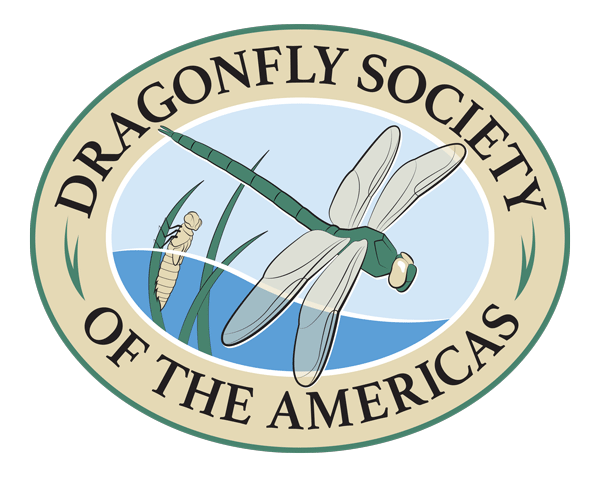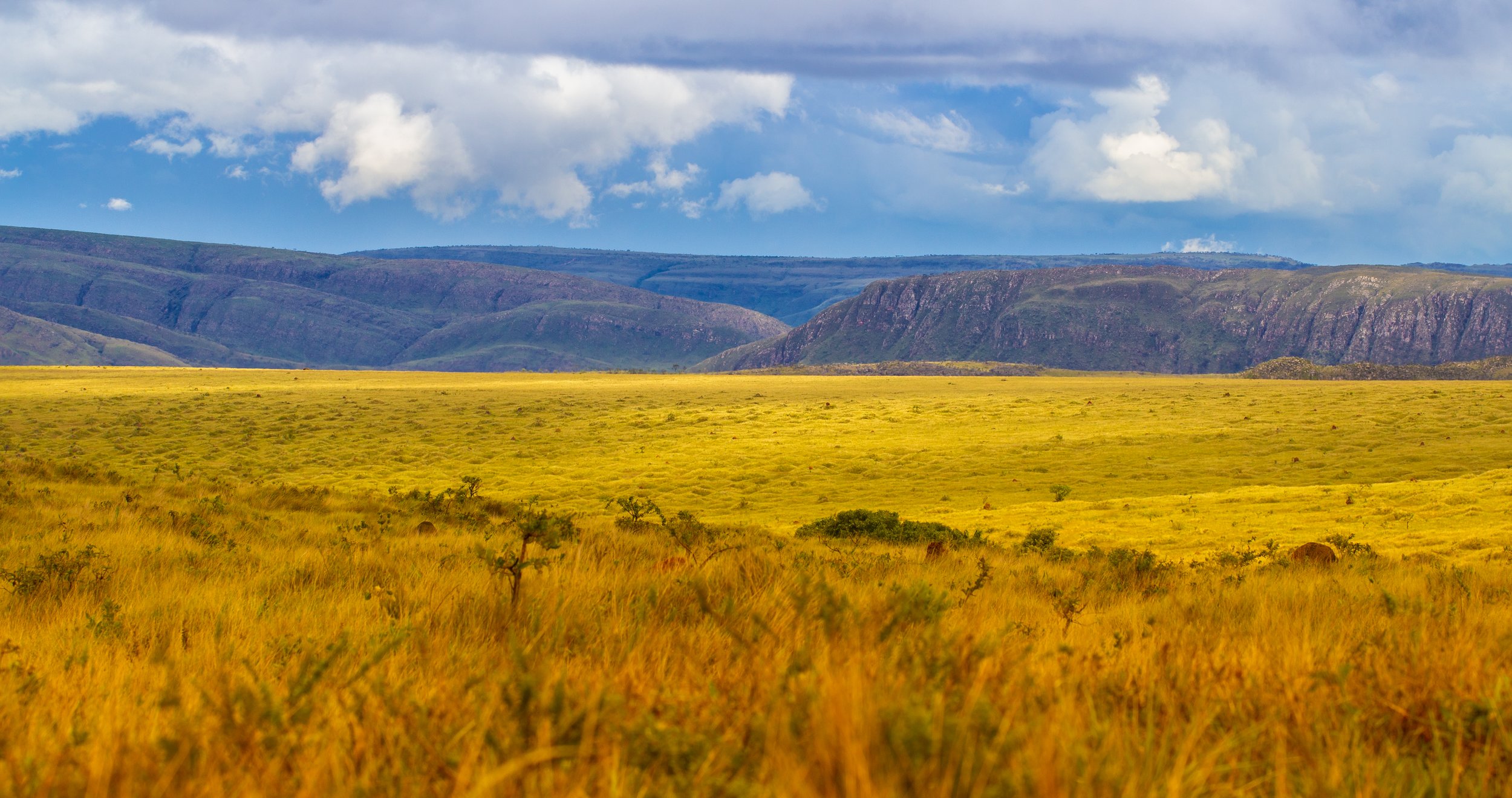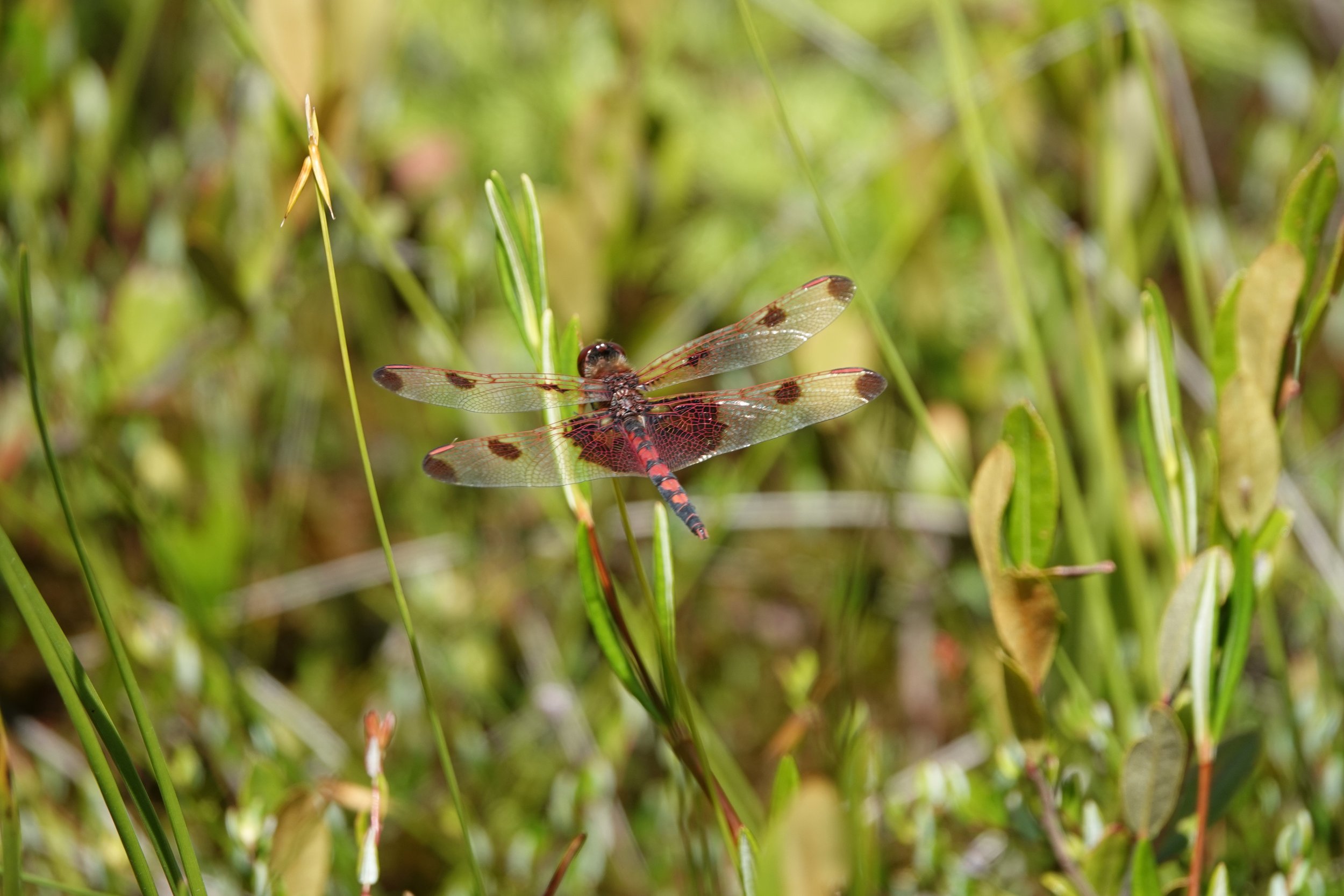September Species of the Month: Pondhawks of REGUA (Erythemis sp.)
September’s DSA Species of the Month is a look at several of the Pondhawks of Brazil. There are ten species of pondhawks (Erythemis sp.) world-wide, and Brazil is home to at least eight of them. Pondhawks range in size from 38 mm (approximately 1 ½ inches) to about 59 mm (approximately 2 ⅓ inches) Dennis Paulson notes that members of this genus are voracious predators. You may find them in ponds, marshes, or even (as our blogger did) in some surprising places! Join dragonfly chaser Kim Smith as she encounters pondhawks on an adventure in Brazil.
Claret Pondhawk (Erythemis mithroides), Reserva Ecológica de Guapiaçu, Brazil, 1-17-23. Copyright Kim Smith.
Pondhawks of REGUA (Reserva Ecológica de Guapiaçu), Brazil
In January, I left my Ohio home in the Midwestern United States to spend a week watching Odonata at Reserva Ecológica de Guapiaçu (REGUA). REGUA is located in Brazil’s Atlantic Forest, not far from Rio de Janeiro. They are restoring 18,000 acres from degraded farmland to native forest and wetlands. It seems to be a magnificent success—REGUA has documented 200 species of Odonata! The lodge rooms are simple, but very comfortable. The food was a series of tasty Brazilian dishes.
While I traveled solo, and was able to roam their extensive trail system safely without a guide, I chose to take advantage of their knowledgeable and friendly guides twice. We traveled to locations outside of the preserve for even more variety.
Reserva Ecológica de Guapiaçu (REGUA), Brazil January 2023. Copyright Kim Smith.
Of the many beautiful species I saw for the first time on this trip, I was particularly enchanted by the pondhawks. In my home state of Ohio, we only have one Erythemis species, the Eastern Pondhawk (E. simplicicollis). There are ten species of this genus worldwide, and eight of them are known from REGUA.
Prior to leaving for Brazil, I’d purchased Tom Kompier’s wonderful A Guide to the Dragonflies and Damselflies of the Serra dos Orgaos, and hoped to find as many species as possible. Despite my low tolerance for the extreme heat, and heavy afternoon rains that kept me indoors, I was able to document four pondhawk species on my trip.
Pondhawks are skimmers known for their frequent taking of larger prey insects including other dragonflies. Also of note, according to odonata expert Dennis Paulson, obelisking for temperature regulation has not been observed among the members of this genus. The habitats I visited were all ponds with emergent and floating vegetation, and so were prime hunting territory for Erythemis. I saw many individuals at most locations, but my only Great Pondhawk ( E. vesiculosa) observation was at a roadside puddle.
Great Pondhawk (Erythemis vesiculosa), Reserva Ecológica de Guapiaçu, Brazil, 1-19-23. Copyright Kim Smith.
I spent a couple days exploring the main wetlands at REGUA, which hosted large numbers of two species with blazing red abdomens, impossible to miss as they seemed to glow under cloudy skies. Red isn’t a common color among my local Ohio Odonata, and occurs primarily in the meadowhawks (Sympetrum sp.). But our red meadowhawks’ abdomens are marked with black along the sides, whereas the Flame-tailed Pondhawks (E. peruviana) and Claret Pondhawks (E. mithroides) in Brazil had solid red abdomens that screamed, “Look at me!”
Claret Pondhawk (Erythemis mithroides), Reserva Ecológica de Guapiaçu, Brazil, 1-17-23. Copyright Kim Smith.
The Flame-tailed was particularly striking with its clearly divided black and red portions, as if someone had held its head and dipped the abdomen in scarlet paint right up to S3.
Flame-tailed Pondhawk (Erythemis peruviana), Reserva Ecológica de Guapiaçu, Brazil, 1-16-23. Copyright Kim Smith.
The last species I photographed was also abundant, although less colorful. The Pin-tailed Pondhawks (E. plebeja) were busily chasing each other around, and I observed several females ovipositing while guarded by hovering males.
Pin-tailed Pondhawk (Erythemis plebeja), Reserva Ecológica de Guapiaçu, Brazil, 1-16-23. Copyright Kim Smith.
While it's endlessly fascinating to see new species on my travels, it's also a comfort to return home to my familiar odonates. These days, whenever I watch our Eastern Pondhawk at local ponds, I have fond memories of its colorful relatives in Brazil.
Our guest blogger for September is Kim Smith, an Odonata enthusiast in Toledo, Ohio. Kim leads local field trips to share her love of dragonflies and writes about them at NatureIsMyTherapy.com. She recently served as the President of Toledo Naturalists’ Association and is on the board of the Oak Openings Region chapter of Wild Ones, a nonprofit that educates the public about the ecological importance of native plants. For more information on REGUA, visit regua.org and learn more about this great dragonfly destination.





























































